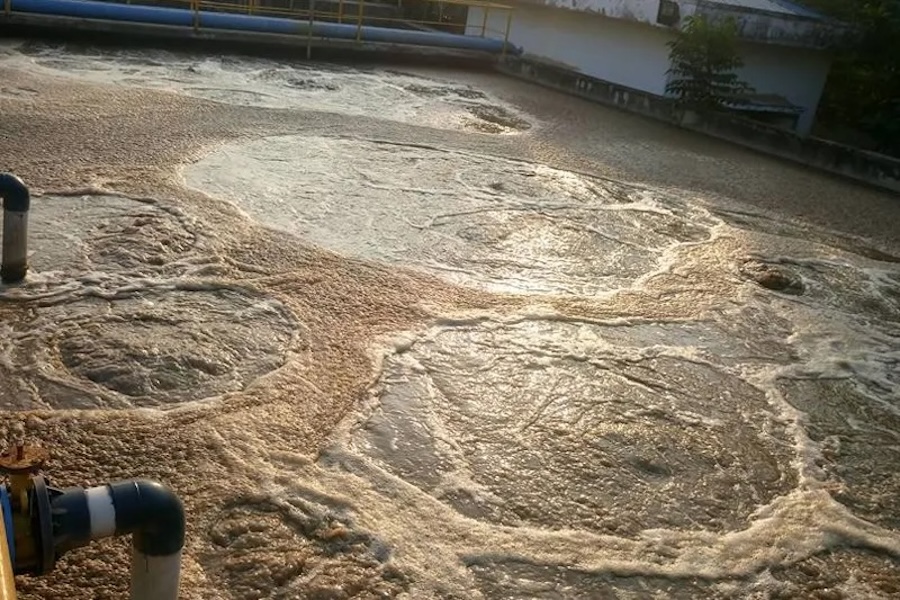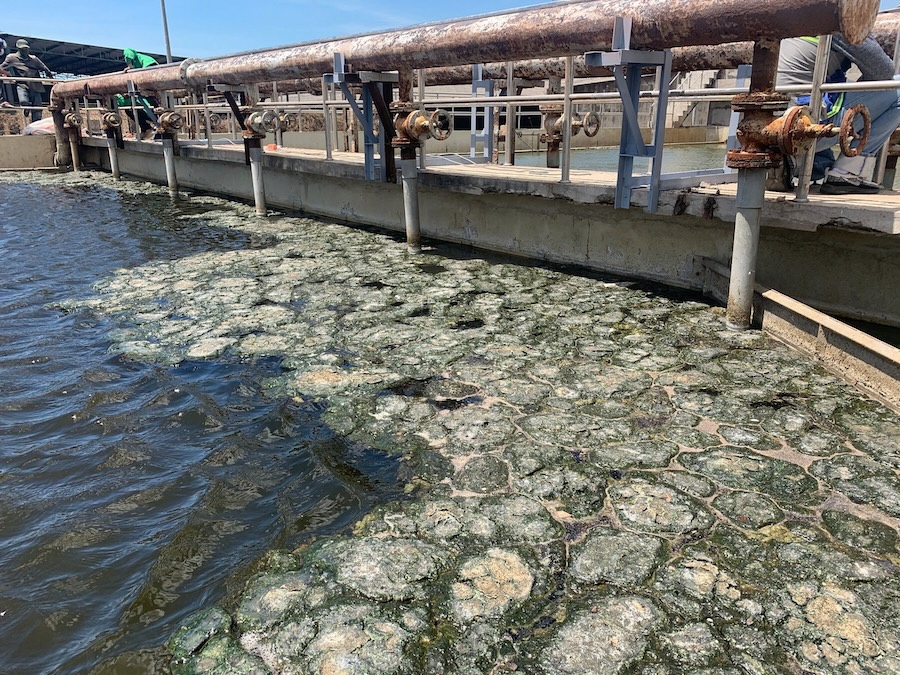During the operation of a wastewater treatment system, sludge floating in the sedimentation tank is a common technical issue that is often overlooked. This condition directly affects the effluent quality and overall system efficiency. Understanding the causes and applying timely corrective measures is essential to ensure stable operation and compliance with discharge standards.
1. What Is Sludge Floating?
Sludge floating in the sedimentation tank refers to the phenomenon where settled sludge rises back to the surface, forming floating sludge patches or scum on the water surface. This is an abnormal sign in the solid-liquid separation phase of the wastewater treatment process. It can occur in both primary and secondary clarifiers, and is especially common in systems that use the activated sludge process.
Easily recognizable signs include thick floating sludge patches on the tank surface, turbid water, sometimes accompanied by unpleasant odors or light bubbling. When this happens, the solid-liquid separation efficiency significantly drops. Suspended solids and biological residues are not completely removed, directly affecting effluent quality. If prolonged, floating sludge can overload downstream treatment stages, lead to discharge standard violations, and incur additional operating costs due to retreatment or increased disinfection efforts.

Sludge floating is an abnormal phenomenon in wastewater treatment systems
2. Differentiating Biological and Mechanical Sludge Floating
-
Biological sludge floating: Caused by biological factors such as anaerobic fermentation in the sedimentation tank, which generates gases (CH₄, H₂S) that make the sludge buoyant and float to the surface. Overgrowth of filamentous bacteria can also cause sludge to remain suspended rather than settle.
-
Mechanical or operational sludge floating: Resulting from physical or operational issues such as flow turbulence in the sedimentation tank, gas leakage from the aeration system, or poorly designed sludge withdrawal mechanisms. These disrupt natural settling and cause sludge to be resuspended to the surface.
3. Main Causes of Sludge Floating
3.1 Excessive Microbial Growth
One of the most common causes of sludge floating is the overgrowth of filamentous bacteria. When the system lacks nutrient balance—particularly nitrogen (N) or phosphorus (P)—the F/M (food to microorganism) ratio drops, allowing filamentous bacteria to thrive. These organisms do not settle well and tend to accumulate as a scum layer on the water surface.
3.2 Anaerobic Fermentation
If sludge remains too long at the bottom of the sedimentation tank without being removed, anaerobic conditions may develop. Anaerobic bacteria decompose the organic matter, producing gases like methane (CH₄) and hydrogen sulfide (H₂S). These gases attach to sludge flocs, reducing their weight and causing them to float and emit foul odors.
3.3 Poor Floc Formation
Inefficient coagulation-flocculation is a technical issue often overlooked. If pH is outside the optimal range (typically 6.5–7.5) or water temperature is too low, floc formation is hindered. Additionally, improper dosing of coagulants like PAC, alum, or polymers can result in flocs too light to settle, making them prone to floating.
3.4 Improper Flow Rates
If the flow rate into the sedimentation tank is too high, it can cause turbulence that suspends sludge and brings it to the surface. Conversely, if the flow is too slow, minor currents can prevent complete settling. Both scenarios reduce sludge separation efficiency and increase the risk of floating sludge.
3.5 Operational Failures: Lack of Sludge Withdrawal or Recirculation
Failing to withdraw sludge regularly or lacking return flow to the aeration tank leads to prolonged sludge retention in the clarifier. Compressed sludge triggers anaerobic conditions and gas formation, resulting in floating sludge as explained above. Power outages, pump failures, or malfunctioning sludge scrapers also contribute to accumulation and floating.

Summary of causes leading to floating sludge in the sedimentation tank
4. Solutions and Preventive Measures
-
Control loading and inflow rate: Maintain stable influent flow to avoid shock loading (sudden spikes in volume or concentration), especially during peak events such as heavy rain or mass discharges.
-
Adjust F/M and nutrient ratios: Ensure a proper C\:N\:P ratio (typically 100:5:1). Supplement nitrogen and phosphorus when deficient to avoid weak microbial populations and excessive filamentous growth.
-
Increase sludge withdrawal frequency: Conduct regular sludge removal to avoid extended retention and anaerobic conditions that produce gas and cause sludge to float.
-
Use coagulants or polymers: Apply PAC, alum, or polymers to enhance floc formation and increase floc weight for better settling.
-
Monitor and control filamentous bacteria: Use microscopic analysis to monitor filament density. Control filamentous growth through competitive microbial cultures or adjustments in pH, DO, and organic loading.
-
Floating sludge in clarifiers is not an uncommon issue, but if left unresolved, it can lead to serious technical and operational consequences.
Strict control of loading conditions, maintaining nutrient balance, regular sludge removal, and microbial monitoring are key solutions to effectively prevent and address this issue. Proactive detection and prevention ensure sustainable, stable operation and long-term cost savings for wastewater treatment systems.

